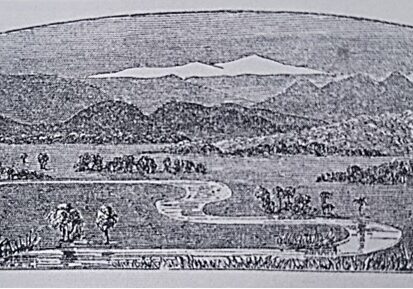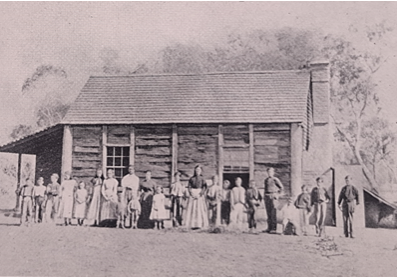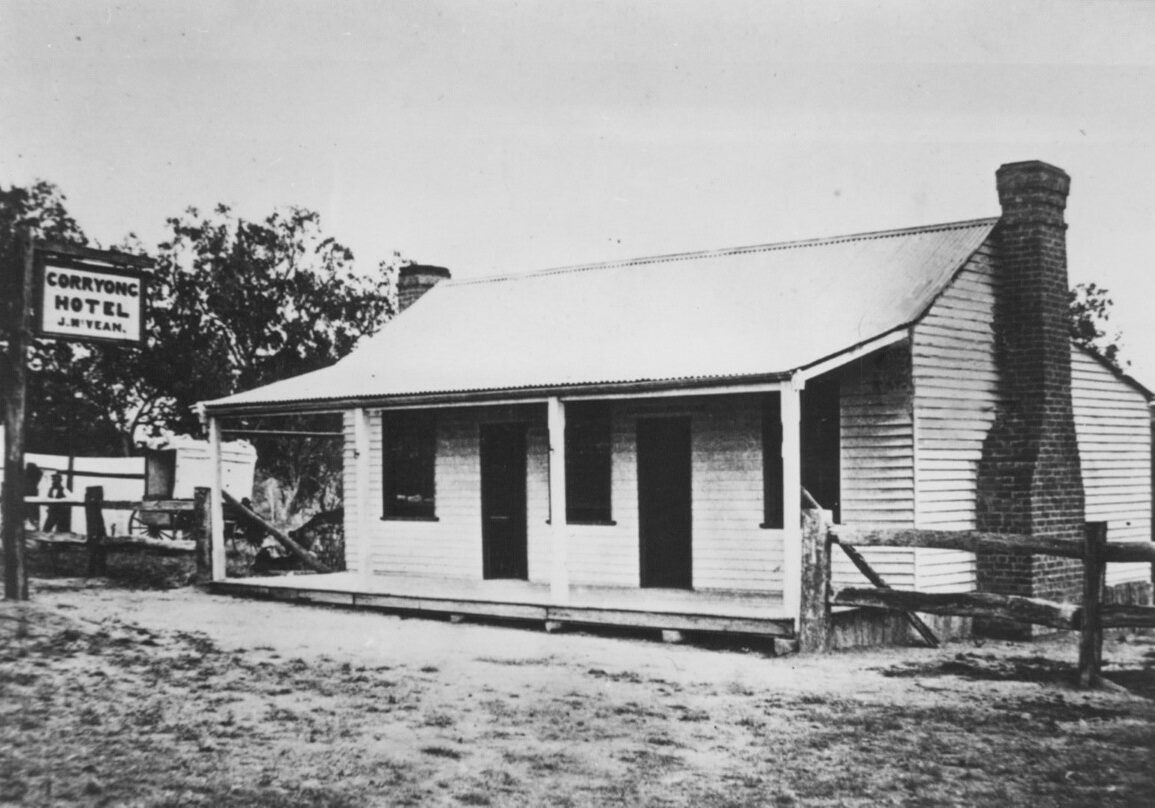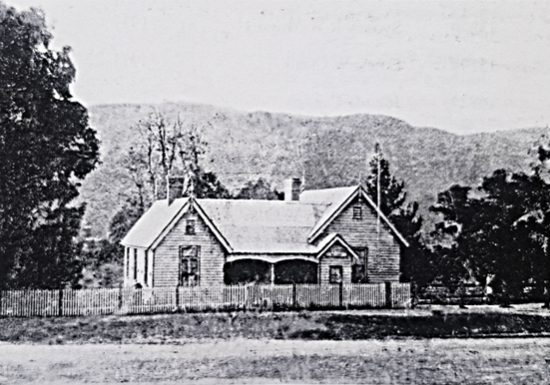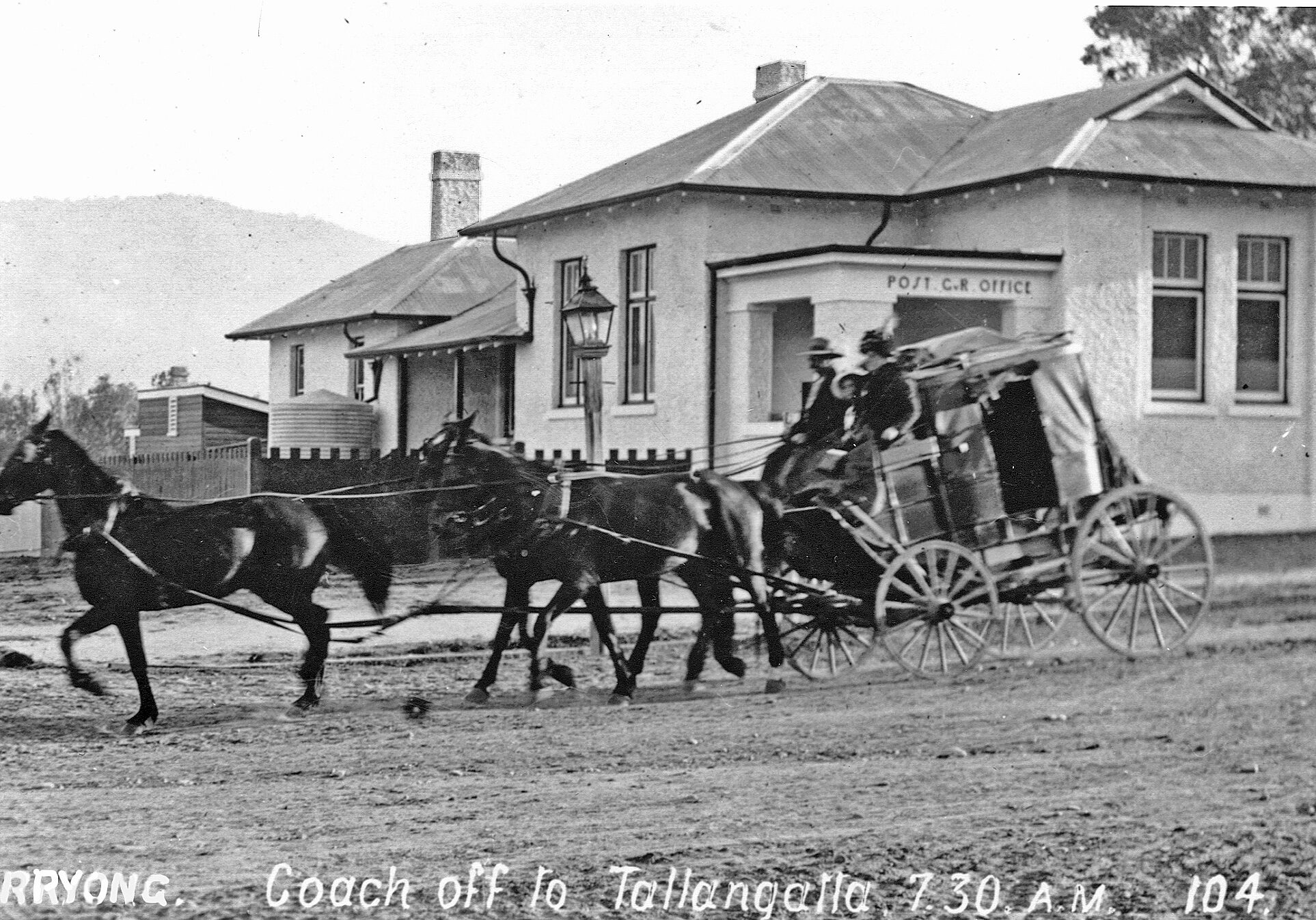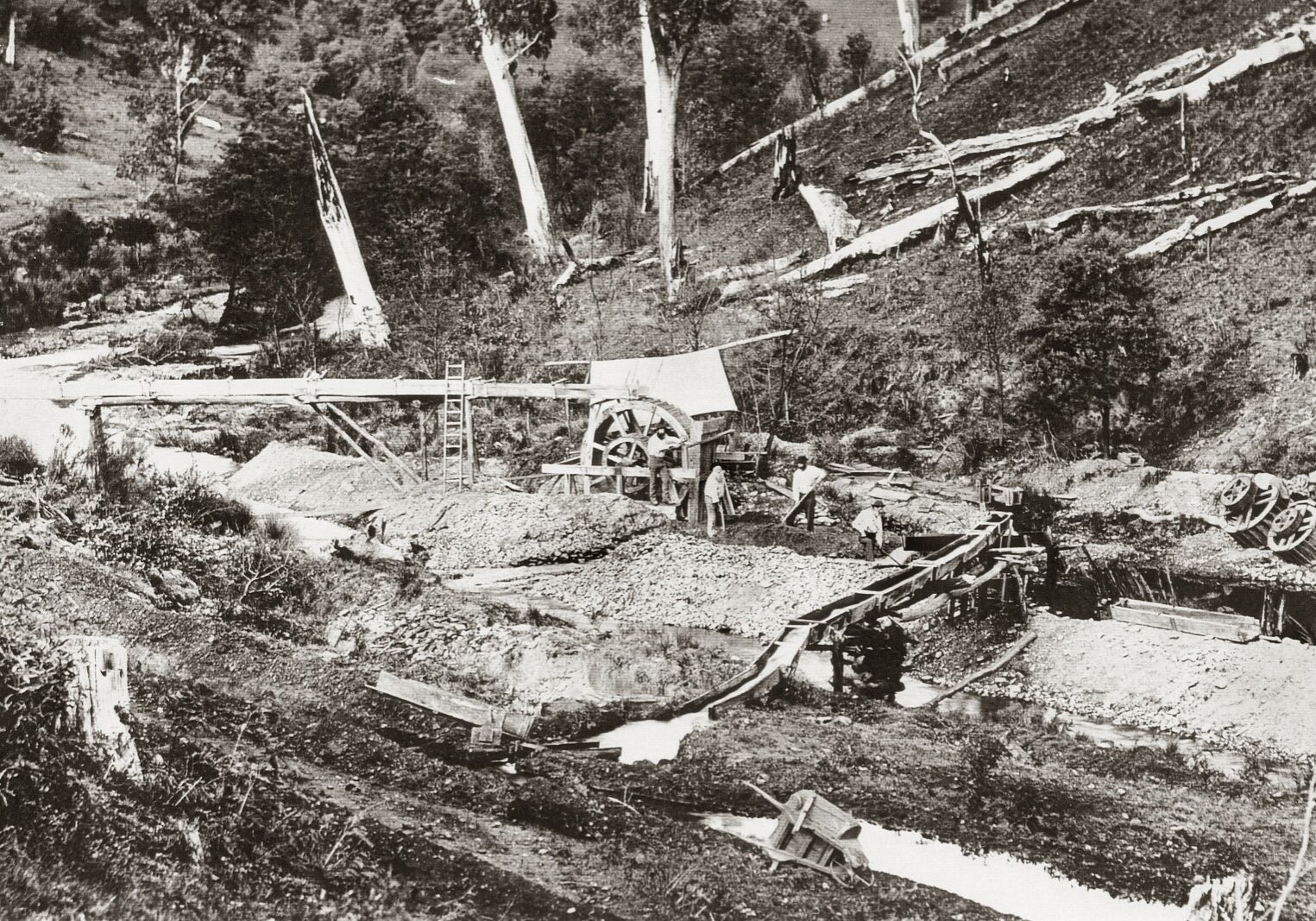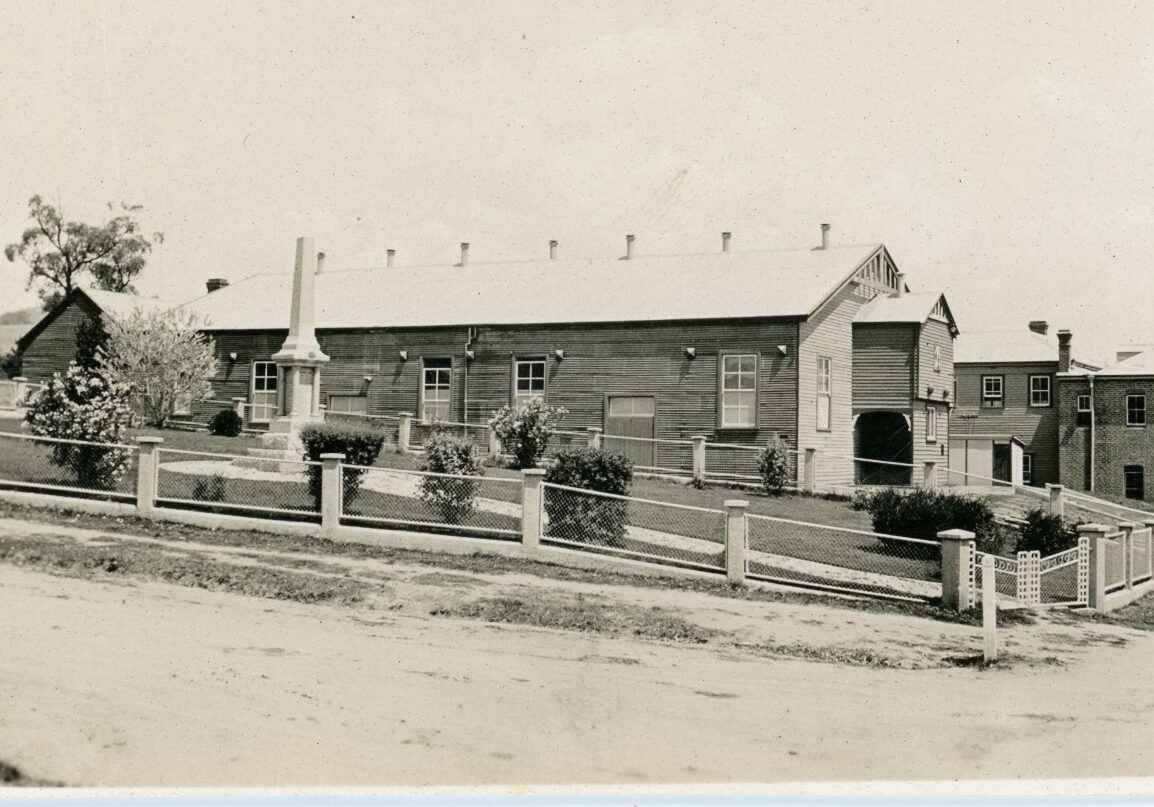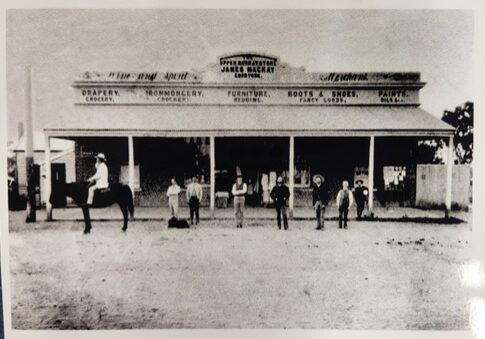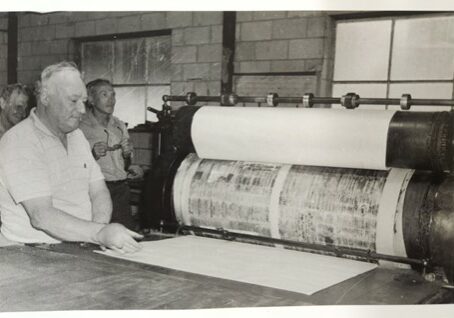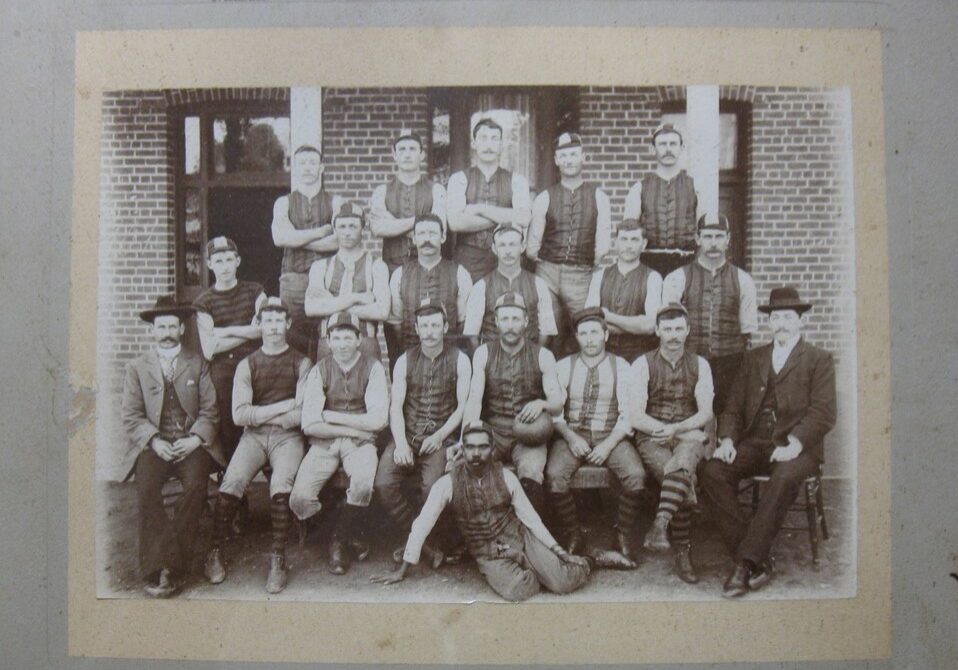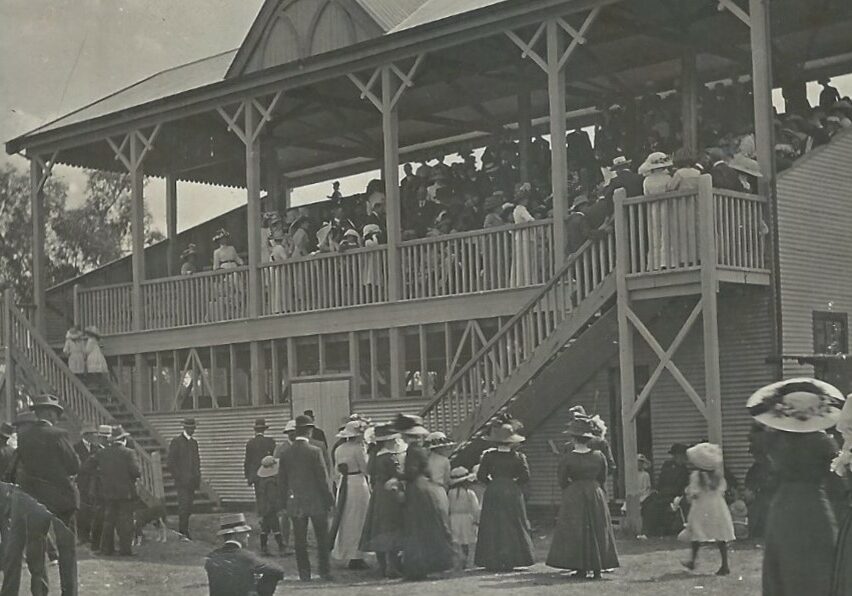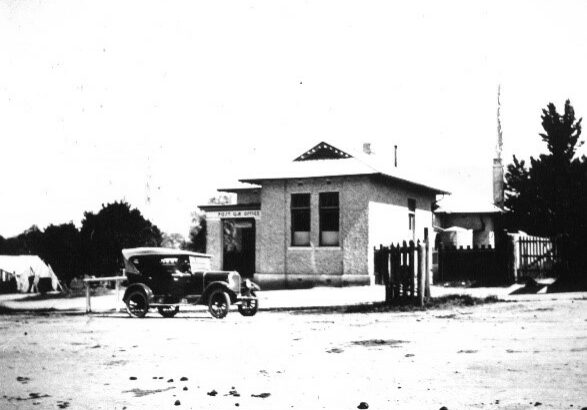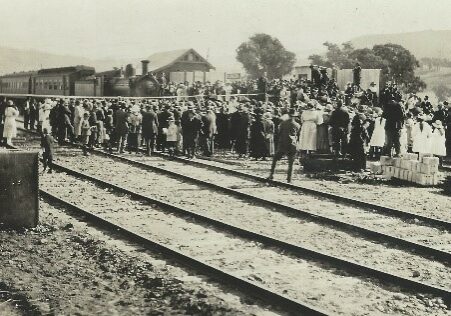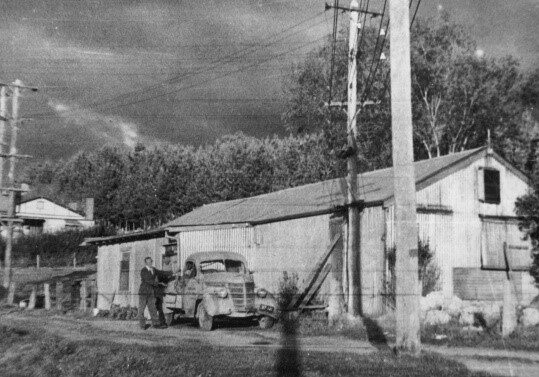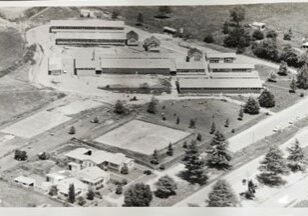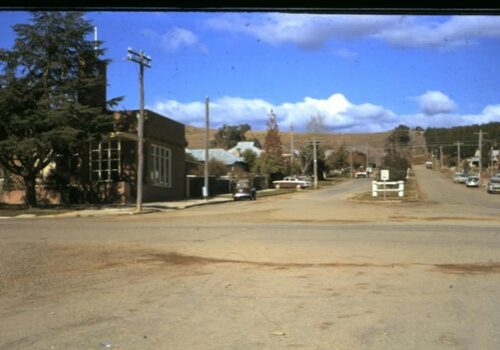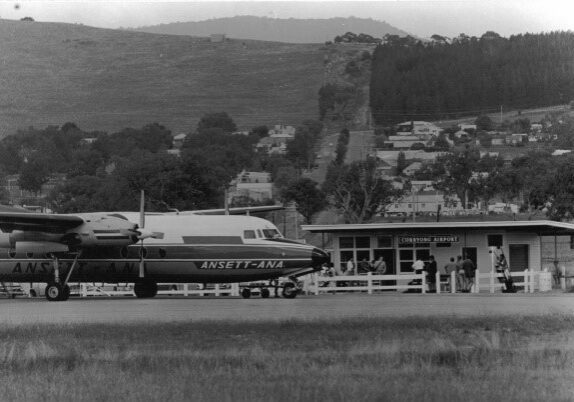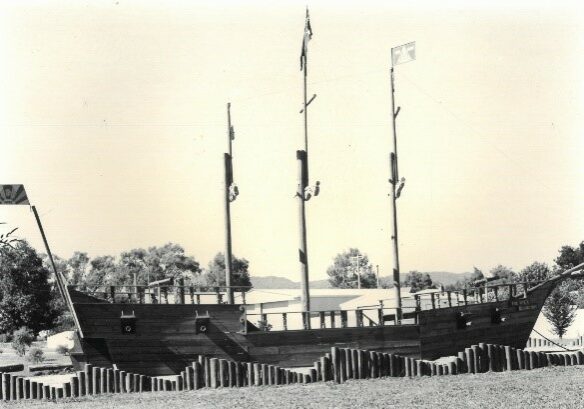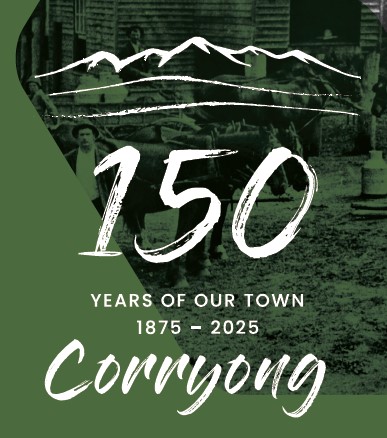Corryong's 150 Year Timeline
19 July 1875 - 19 July 2025
Celebrating 150 Years of Corryong
In 1875, Corryong was officially proclaimed a town — a milestone recognising its growth as a regional centre. While not the first settlement in the Upper Murray, it was among the earliest to meet the criteria for township status, including population, infrastructure and civic activity.
This July, we’re marking 150 years with a series of events and displays that honour Corryong’s past and present.
Take a stroll down Hanson Street to explore the Timeline Trail, a footpath installation created by Corryong College and the Upper Murray Historical Society. Scan QR codes along the way to uncover stories and images from the town’s rich history.
Scroll down to discover what’s on and how you can be part of the celebration.
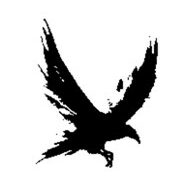
Dreamtime
We acknowledge the First Nations People of the Upper Murray, who have lived here since the Dreamtime. The Jaitmathang, Dhudhuroa, Ngarigo, and Wolgal peoples were — and continue to be — the custodians of this land, including the sacred landscapes of the Australian Alps.
Click here to read more about the First Nations history of the Upper Murray.
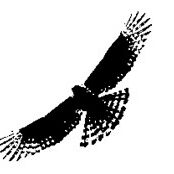
First Europeans
The first Europeans found their way to Upper Murray or Hume River - Corryong district - in 1836 following the introduction of land ownership laws by the Victorian Colonial Government.
1838 “Kuriong” (Corryong) Run informally taken up as a squatting run
1839 "Kuriong" Run or Cowrang Creek (consisting of 12,800 acres) was officially registered to Charles Cowper of Wivenhowe
This image is a published version of P. G. King’s original sketch of Mount Townsend Ridge, drawn from Welaregang in June 1839. It was later reproduced in Rev. W. B. Clarke’s 'Researches in the Southern Gold Fields of New South Wales' (1860). This is the earliest known sketch of this significant landscape.
1851
Victoria - An Independent Colony
On 1 July 1851, Victoria (formerly the Port Phillip District of NSW) was proclaimed a separate and independent colony of the British Crown. It was answerable directly to London rather than New South Wales.
1860 The Nicholson Land Act of New South Wales that was tabled in the NSW Parliament in 1860. The Duffy Land Act was based on the Nicholson Land Act with modifications and passed through the Victorian Parliament in 1862, 1866 and 1869. This threw open country for European selection.
It allowed citizens to take up allotments of land from 80 to 640 acres (32.4 to 259 hectares), providing certain requirements and conditions were met.
1866 Saw the arrival of the Upper Murray’s first “Selectors” to settle around Corryong. They were Hugh Harris, James Briggs and Robert Kiell. These three men were miners from the Stanley Goldfield near Beechworth.
Corryong's First School
With the arrival of selectors and their families from 1836, there came a time when there was a need to educate their children.
Education in Corryong began at Hugh Harris’ Homestead in 1869, with Robert Stratton as the first teacher. His first class consisted of 12 students aged 6 to 16. Stratton's wage was funded by the parents.
By 1870 the school had outgrown this space. A new two-room slab and shingle building—including a teacher’s residence—was built on land donated by Hugh Harris. This school was situated on Hunters Plain, just below the current Corryong Aerodrome.
In May 1872, the school was officially registered as Corryong Rural School No. 127. Unfortunately the site was not favourable due to it being moist in winter and often cloaked in fog. Another site was investigated and further change came in 1877.
Business Buildings
1875 brought changes to Corryong. The first business building, Thomas Miller's Store, was erected on Towong Road.
The Corryong Hotel, built on the opposite side of Towong Road, soon followed. Known locally today as the Bottom Pub, it was operated by Janet McVean upon first opening.
Proclamation
On the 19th of July 1875 Corryong was officially proclaimed a township.
Click here to read the original Proclamation Article featured in the Victoria Government Gazette No. 51 1875.
A New School Site
The inclement winter conditions of the Hunters Plain school site soon lead to a new and more suitable school site being chosen “up the hill” on the corner of Towong Road and Donaldson Street.
Construction began in April 1877 and in July the new Corryong State School, No. 1309, was officially opened. The placement of the school at this site acted as the nucleus of the current business centre of the town rather than around the Corryong Hotel.
Pictured here is the "new” Corryong School and Teacher's Residence, circa 1877. Read on to learn about the evolution of schooling in Corryong.
Crawford & Co.
In 1878 a coach service, operated by Crawford & Co., opened a new line running twice weekly between Wodonga and Tallangatta (now Old Tallangatta).
On the Saturday service, the coach would continue on from Tallangatta through to Corryong, terminating at Towong. On route, there were two stops for fresh horses - one at Koetong and the other at Wabba Hotel.
In 1881 Crawford & Co. started a regular twice-weekly coach service from Wodonga to Corryong via Old Tallangatta, with the terminus being the Corryong Hotel. To support the growing traffic and keep wheels turning, local blacksmith Charlie Jones opened his “smithy” nearby. He offered immediate repairs for the coach and other passing business.
1879
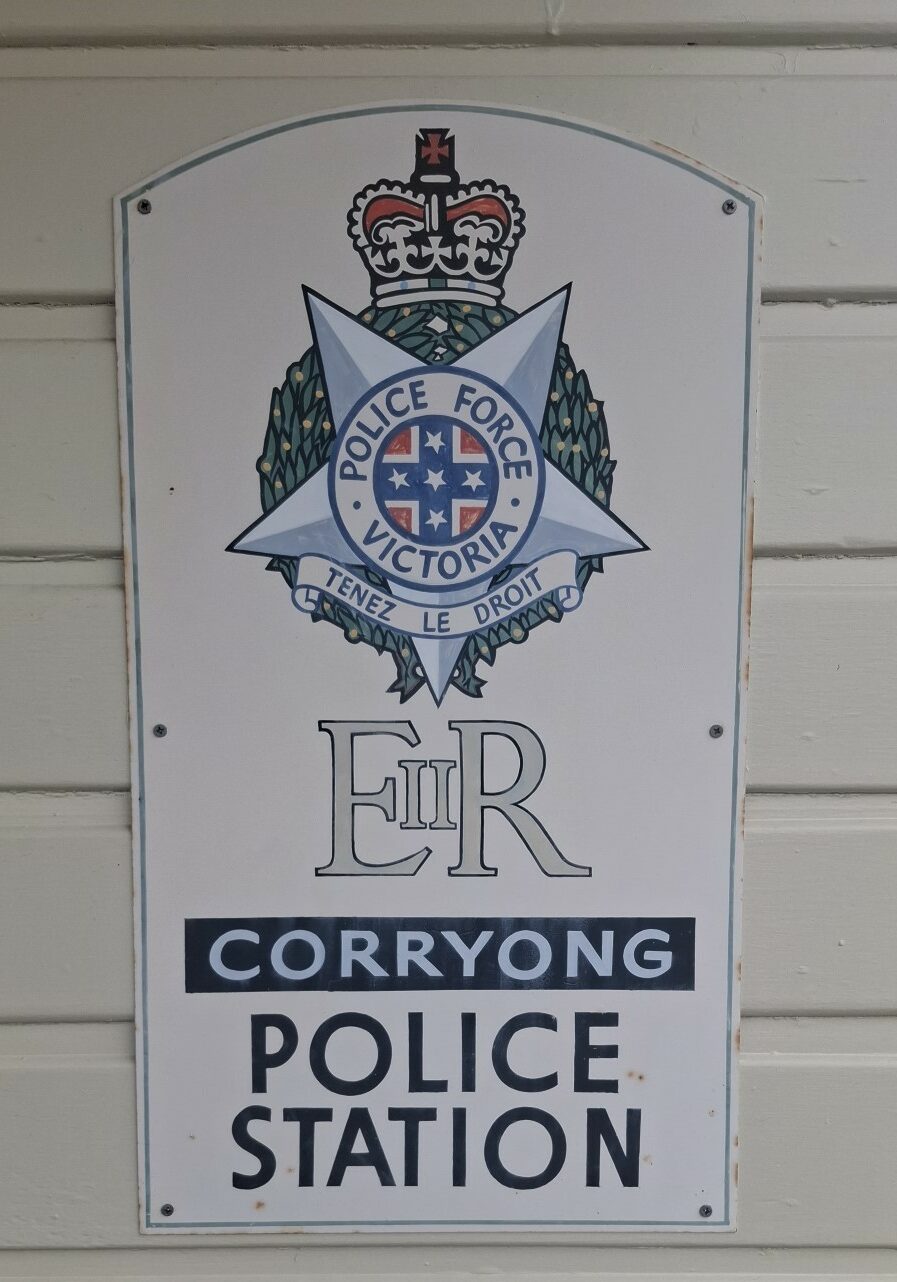
Corryong is Officially Surveyed
The township of Corryong was officially surveyed by Thomas Brain.
Permanent Police Presence Arrives
Corryong’s first permanent police presence came in 1879. In May, Mounted Constable George Robinson was transferred from Barnawartha to take charge of policing at Corryong.
He was ordered to keep a "bright lookout for the Kelly Gang" who were still at large and a catalyst for permanent police presence.
Corryong Enters its Golden Age
Gold is found. Alluvial gold and reefs were discovered at Zulu Creek, towards the head of Wheelers Creek.
Allure of Gold
Following the discovery of alluvial gold and reefs discovered at Zulu Creek, people were attracted to the area is search of making their fortune.
1880 Alluvial rush to Bullocky and Thowgla Creek
1883 Payable quartz reefs uncovered at Dark (Dart) River, Gibbo Range
These rushes added materially to the town.
Corryong Athenaeum Hall
As the township began to develop, it was recognised that a community centre was required. Public land had previously been put aside during surveying, for this purpose. Builders William Lloyd and James Sharp won the tender and work commenced in 1879.
The Corryong Athenaeum Hall was officially opened in April 1880 with 200 people in attendance.
The Athenaeum Hall was pulled down in 1958 and the Corryong District & Memorial Hall was then constructed in its place.
The Corryong Memorial Hall still stands on this site today.
Beginning of the Business Precinct
The first business building erected in the business precinct was Charlie Jephcott’s Saddlery Shop. This was prior to the town blocks being officially surveyed.
Charlie Jephcott bought the old slab school on Hunter’s Plain after the school was vacated. Charlie worked in it for a short while then removed it to the site of Mathew Cooper’s Real Estate business.
Click here to find a historical record of business in Corryong from 1891 - 1898.
1882
First Official Land Sales & Corryong's Second Hotel
The first official land sales in Corryong come about in 1882 - 1883.
After being refused a publican’s license on the Upper Thowgla Diggings, Sarah King removed her slab accommodation house from Upper Thowlga Creek and re-erected it on the site of the present-day Courthouse Hotel.
While it was being re-erected the structure was expanded to 11 rooms. She then successfully reapplied for a publican’s license on this new site, thereby opening Corryong’s second hotel.
Thomas Donaldson, took over Thomas Miller’s Store. After Miller's demise he built the first substantial building in Corryong, on the corner adjacent to the school.
The store, constructed of brick, was opened on the 26th July 1883 and for several years Donaldson’s Store also acted as Corryong’s first official Post Office.
1886
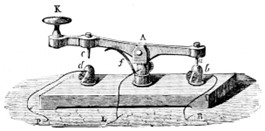
The Electric Telegraph Service Arrives
Corryong finally connected to the electric telegraph service via (Old) Tallangatta. This was the first time that messages could be conveyed faster than horse or steam train.
In 1897, Corryong installed a single telephone line between Tallangatta and Corryong.
1888 - 1894
Gold Discovered on Mt Elliot
During the winter of 1888 gold was discovered by the McInnes Bros. at Towong in the watershed of Fisher’s Creek on the Bringenbrong side of Mount Elliot. A number of significant quartz reefs were soon opened. In 1894, rich gold bearing reefs were discovered on Mount Elliot after Sandy McInnes and family opened the New Chum on Towong Gap. These were the first payable gold bearing reefs found close to Corryong.
Corryong Courier
In January 1894 Corryong's local newspaper, the Corryong Courier commenced weekly publication. Before this the favourite local newspapers were The Albury Banner and Upper Murray & Mitta Herald. Predictions were that the Courier would be short-lived but, remarkably, it is still in print to this day – a rarity for country newspapers.
Corryong Football Association
The Corryong Football Association formed in 1897 and consisted of the teams - Corryong, Cudgewa and the Miners. After 1901 the Miners became Federals Football Club.
1898
The Cudgewa Diary Co.
The Cudgewa Diary Co. went through major re-organisation and modification, and re-located to Thougla Creek on the Towong Road just out of Corryong. The Cudgewa Dairy Co. became a major industry for the district and brought much-welcome employment.
1901 Federation
Corryong Recreation Reserve
The Corryong Recreation Reserve formed in 1903 and the Corryong Grandstand was built.
The Corryong Horse Racing Track was incorporated into the reserve the same year.
A Hospital for Corryong
The Corryong Cottage hospital opens.
You can delve into Corryong Health’s story on their website: ‘Together, Strengthening the Health of Our Community’
A Year of Firsts
1914 brought many changes including advancements at home and service abroad.
The Corryong Post Office opened on the corner of Hanson and Jardine Street.
The first silent movie was shown at the Athenaeum Hall.
Work on the long-awaited railway line between (Old) Tallangatta and Corryong commenced.
World War One commenced drawing many young men away from the town and district. Eighty percent of the eligible young men of the district volunteered for Active Service. This is surely a record for Victoria.
WWI 1914 - 1918
1917
Last Days of the Public Coach
The development of roads and automobile transport meant that, after serving the Upper Murray for 39 years, the Tallangatta to Corryong coach closes down and is replaced by automobile.
1918
Troops Return Home
World War I ends – Troops return home from late 1918 to early 1919.
1930s
1931 Talkies first shown at Athenaeum Hall.
1935 Electric Lighting comes to Corryong with the erection of the “Corryong Powerhouse” on Greenham Street.
This plant served the town until 1961.
1939
Bushfires narrowly missed Corryong but devastated much of the district.
The outbreak of World War II took many young men and women away from the district.
Corryong had an enemy aircraft spotting post established near the corner of Wheeler Street and Jephcott Avenue.
WWII 1939 - 1945
1945 – 1946
Troops & Female Auxiliary Forces
Troops and Female Auxiliary Forces return after WWII.
1953 Corryong High School is established and commences operation.
1955 Corryong R.S.L. Hall opens on Donaldson Street.
1958 The old Corryong Athenaeum Hall is demolished.
Corryong Ambulance Service commenced operations.
The first six housing commission houses built.
1959 Corryong & District Memorial Hall and Civic Theatre opens.
Snowy Hydro Electricity Scheme
Operations commenced on the Eucumbene–Murray section of the Snowy Mountains Scheme in 1959, marking the first stage of this ambitious nation-building project.
Construction also began on a new Snowy Mountains Authority (SMA) town at Khancoban. A decade later, in 1969, the Snowy–Murray Project was completed. Focus then shifted to major developments at Talbingo and the Blowering Dam.
Over the course of its construction, more than 100,000 people from over 30 countries worked on the Scheme. Many were migrants who had fled the devastation of post-war Europe, seeking a fresh start. On the Scheme, former enemies and allies worked side by side, forming a tight knit “Snowy family.”
Learn more about the iconic Snowy Hydro and how it helped shape modern Australia: snowyhydro.com.au/about/history
1961 Mains electricity from the Kiewa Scheme connected to Corryong
Hume Pipe Factory opens to manufacture steel pressure pipes for the SMA Murray 1 and Murray 2 Power Stations. This was the biggest industry in the town.
1962 Sewerage works completed. Corryong says good bye to the dunny can! The town is now fully flushing!
The Main wing of Corryong High School burnt to the ground.
1963 The Upper Murray Historical Society started and was located at Davis Cottage.
1964 The Corryong Aerodrome is opened.
TV transmission is established in Corryong.
1966 The introduction of Decimal Currency. Farewell to pounds, shillings and pence.
Corryong Centenary of the first arrival of Selectors to the District (Harris, Briggs and Kiell)
Australia becomes involved in the Vietnam War. 17 Upper Murray men served throughout the campaign, both enlisted and drafted.
Corryong sees the end of “Six O’clock Closing”. Pubs are allowed to remain open to 10 pm.
1969 The Corryong Memorial Swimming Pool opens for business.
1970s
1971 The new Upper Murray Shire Offices opened. The former shire building was made available to the Upper Murray Historical Society. The Man from Snowy River Museum remains located in this building. For current information about the museum’s exhibits and opening hours, visit the museum’s website or social media channels.
1972 The Last Picture Show – Saturday 1 July 1970. The last movie, Diamonds are Forever, is screened at the Corryong & District Memorial Hall Civic Theatre.
Regular showings of weekly movies became the victim of television. The “Top Picture Theatre” in Donaldson Street closed not long after.
1978 The last train (a tourist train) makes the final journey to Cudgewa.
1992 "The Man from Snowy River" film is released. Directed by George Miller and starring Kirk Douglas, Tom Burlinson, Terence Donovan and Sigrid Thornton.
1986 Murray Goulburn closed the butter factory.
1988 Corryong celebrates the Bicentenary by 'launching' the Galleon in Galleon Park.
1990s
1990 Corryong High School becomes Corryong College
1994 On 4 November, the Shire of the Upper Murray and the Tallangatta Shire are amalgamated to form the Shire of Towong.
1995
The Man from Snowy River Bush Festival
The Man from Snowy River Bush Festival launches into a new modern format.
From this beginning, the Festival has grown into a beloved national event that celebrates the Australian High Country and way of life, attracting thousands of people to Corryong each April: bushfestival.com.au
The Upper Murray’s connection to A.B. ‘Banjo’ Paterson, and his meeting with Jack Riley through the Mitchell family, continues to spark passionate debate over the true identity of The Man from Snowy River.
2002
Corryong College and Corryong Consolidated Primary School merge to operate as one school, Corryong College.
Corryong College operates across two different sites with a junior and senior campus.
2019 - 2020
Bushfires
The destructive 2019/20 bushfires swept through the district, burning down many homes and sheds in the Upper Murray and closely threatening the town.
Covid 19 Pandemic shuts down the town.
Corryong College now operates from a single site, previously the senior campus. The school leaving the site on the corner of Donalson Street and Towong Road where it has been since 1877.
Corryong Celebrates 150 Years of Rich History
In July 2025, Corryong proudly celebrates 150 years since its official proclamation.
The community invites you to be part of this historic milestone through a month-long celebration, with events concentrated around 19–27 July and permanent month-long installations on display from early in the month.
From unique events to one-off installations and lasting tributes, Corryong’s 150-year story will be honoured in exciting and memorable ways.
Discover more about the 150 Year Celebrations.
